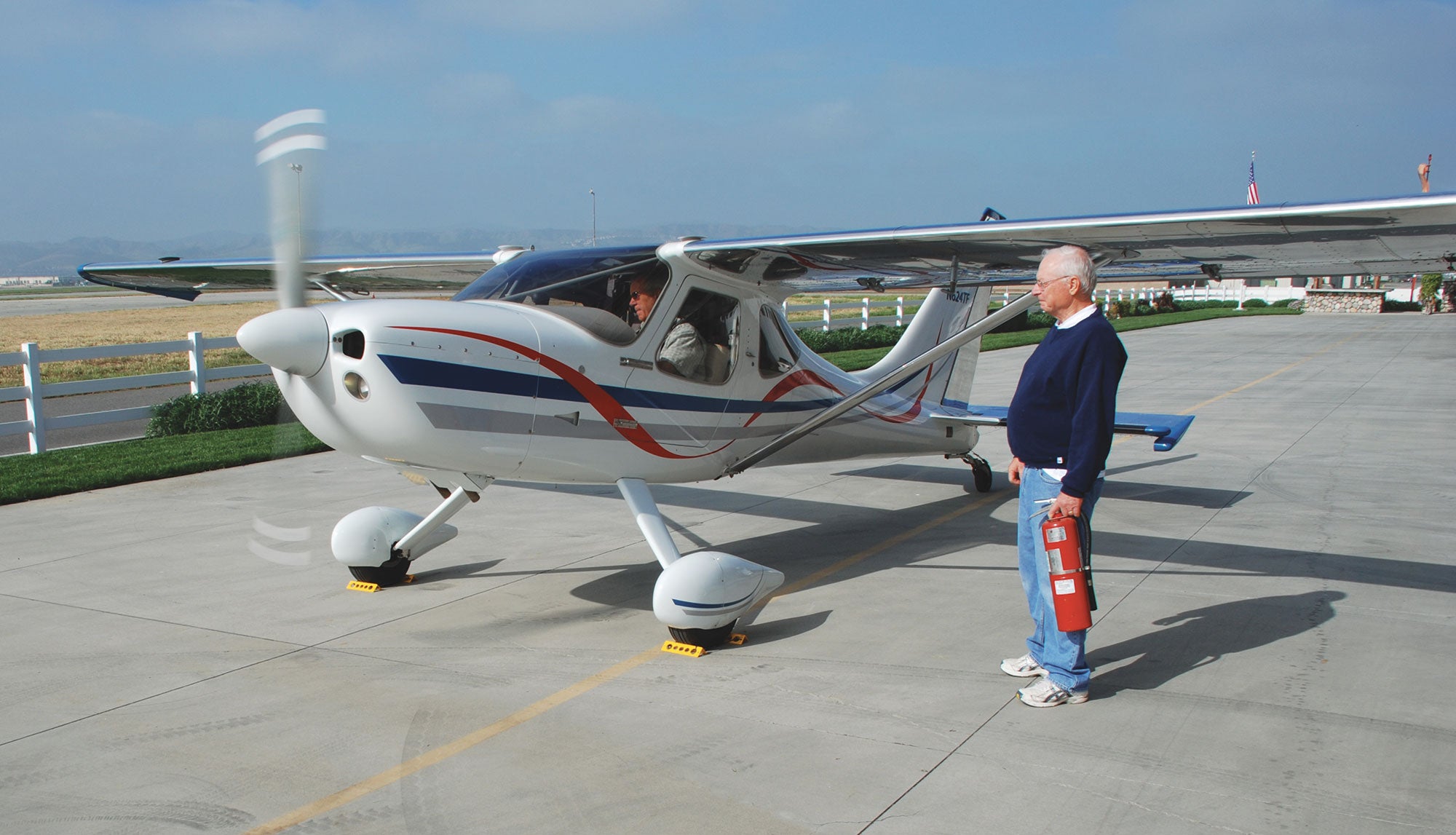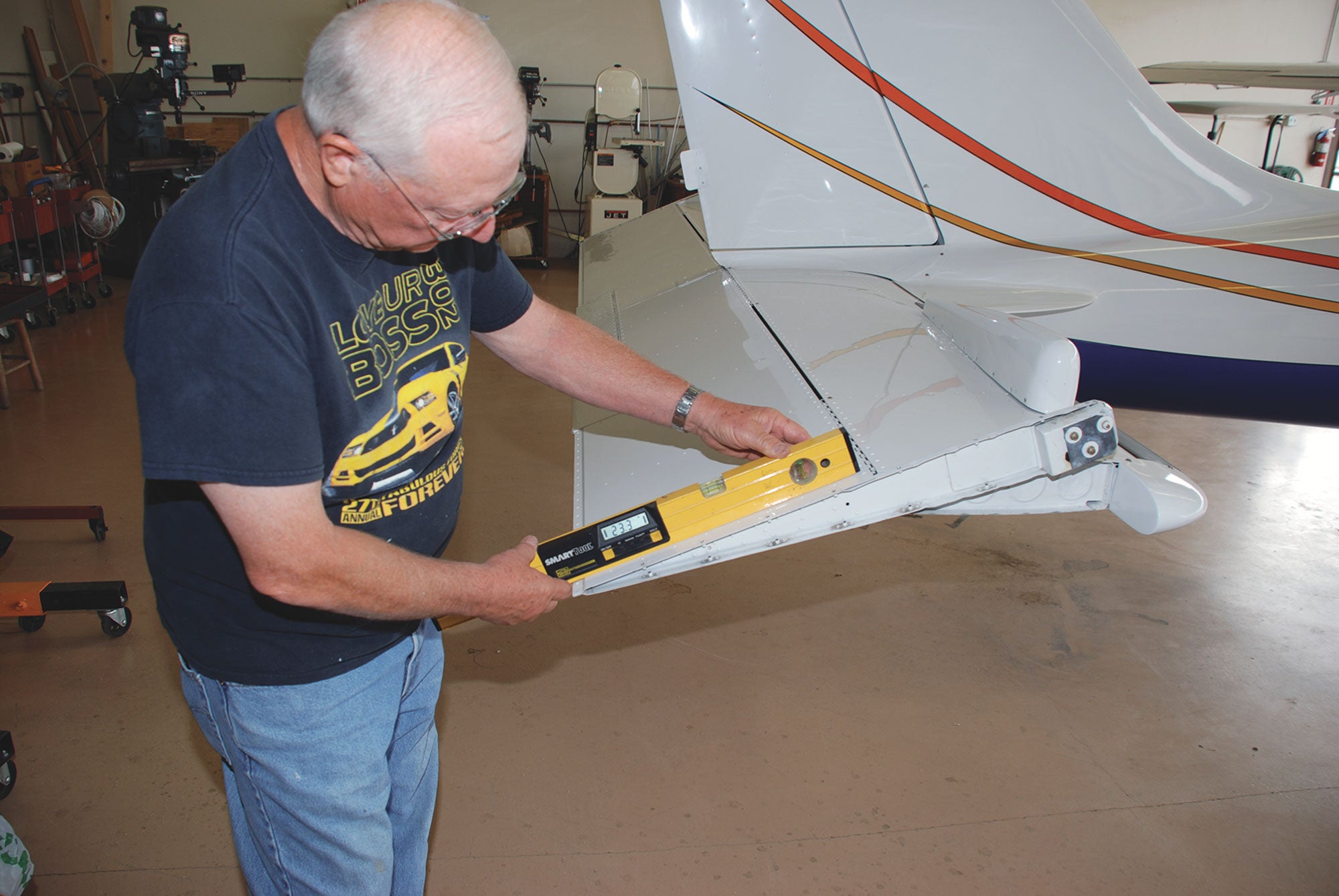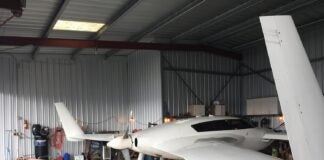
In the final stages of the design process, all of the major factors of the design have been resolved. The airplane is properly sized, it balances and the structure can carry the loads. The outer mold line and detailed parts are defined. At this point, a configuration of the airplane is frozen, a prototype is built and testing begins.
One of the best descriptions of the engineer’s view of testing comes from novelist and engineer Nevil Shute Norway. In his excellent (highly recommended) book Slide Rule, he recounts his experience as a lead engineer aboard the first flight of the British R-100 airship. After an account of the cheers as the ship was walked out of its shed he notes, “We then floated up to about 1000 feet and set about finding our mistakes.”
Flight test explores the characteristics of the real as-built airplane. No matter how good the initial design is, it’s likely there will be some things that need refinement. In test, we verify the correctness of much of the design and discover the things that need improvement or fixes.
Flight test concentrates on different areas as it progresses. The first phase of testing concentrates on safety of flight and the functioning of the airplane and its systems. These tests start before the airplane flies.
Systems Checkout
All of the safety-critical systems of the airplane should be tested on the ground to ensure that they function well enough to clear the airplane for first flight. Before the airplane can fly, it’s vital to ensure that the engine will keep running well enough to fly and the pilot will be able to control the airplane.
Engine and Propeller
Power-up is a major milestone in any airplane development program. It is the moment the machine comes alive.
Ground testing of the propulsion system should ensure the integrity of the engine, its mounts and accessories. During initial ground running of the engine, the whole system is subjected to the forces generated by the engine and propeller and to engine-induced vibrations for the first time.
It is common during initial engine runs to find things that either tend to vibrate loose or chafe as a result of vibration causing them to move more than predicted. This is not limited to inside the engine compartment. The whole airplane is being subjected to vibration for the first time, so check everywhere. Once vibration-induced issues are found and resolved and all is secure, engine testing can move on to high-power runs.
High-power testing concentrates on ensuring that the engine will keep running even at maximum power and climb attitude. The engine should be run up to full power with the airplane in both the level-flight attitude and in a nose-up attitude to simulate climb. Two areas of primary concern here are the fuel system and engine cooling.
The fuel system must be able to provide enough fuel flow to feed the engine continuously at full power. Full-power test runs should be long enough to ensure that there is sufficient fuel flow to continue indefinitely. One potential issue to be alert for is a situation where there is residual fuel in the system that supports a brief full-power run but insufficient fuel flow to sustain it.
One example of this appears on carbureted engines: A carburetor holds fuel in its bowl and feeds fuel from the bowl into the engine itself. The engine can run for a brief period on the fuel held in the carburetor bowl, even with no additional fuel flow feeding from the tanks. If the fuel flow is insufficient to feed the engine at full power, the carburetor bowl will fill in the fuel deficit until it is empty, at which point fuel flow into the engine stops, and so does the engine.
This phenomenon has caused accidents in normal operations of well-proven airplanes. There can be enough fuel in the carburetor to start up, taxi out and take off even with the fuel turned off. This has happened, and it leads to an abrupt engine stoppage shortly after takeoff.
Cooling
During initial engine testing it’s important to monitor engine temperatures and ensure that the engine cools properly. This can be difficult, particularly for pusher configurations, because there is no forward airspeed to force cooling air through the system. For engines with liquid cooling systems, it’s important to run long enough for thermostats to open and verify proper coolant flow.
Ideally, the engine temperatures should stabilize at a power setting high enough to maintain flight. At the very least, the rate of temperature rise at full power should be slow enough to give confidence that engine temperatures will stabilize with the added cooling flow from airspeed in flight. If the engine temperature rises continuously and shows no sign of stabilizing, the cooling system is likely inadequate and will need revisions before the airplane can be cleared for first flight.
Cooling is safety-critical. This is particularly important on a first flight. The pilot is exploring a new aerodynamic configuration and needs sufficient time to explore controllability and low-speed flying qualities to be able to set up for a safe landing. If the engine cooling is insufficient, the pilot can end up in an emergency situation, needing to land quickly in an untried airplane.
Cooling problems led to a fatal accident some years ago on the first flight of an airplane built to set speed records. The airplane took off successfully and apparently was stable and controllable, but shortly after takeoff the engine temperatures began to rise rapidly. The pilot made the (likely correct) decision to land immediately but had not been able to fly high enough or long enough to explore the low-speed characteristics of the airplane. Unfortunately, during the attempted landing the airplane stalled at a higher-than-predicted airspeed at very low altitude. It snap-rolled and hit the ground inverted, with fatal results. Although the premature stall was the primary cause of the accident, it’s likely that without the cooling issue the pilot would have discovered the premature stall characteristic at altitude and been able to adjust approach speed to avoid stalling.

Control System
The primary flight controls should be checked to ensure that they can move through their full range of travel without issues such as friction or jamming. The pilot must be able to easily move the controls though their full travel with their safety belt and shoulder harness securely tightened. Make sure the cockpit controls command the expected positions of the systems they are actuating (control surfaces, throttle, mixture, etc.). Sometimes, the geometry of control horns or other elements of the control linkages must be modified to ensure the proper travel. In particular, check that the aileron deflections produce the required differential up/down travel to minimize adverse yaw.
It’s a good idea to test the primary control surfaces, particularly the elevators, with some load on them to look for unexpected flexibility in the control linkages and to check all controls for dead bands and free play.
Test Equipment
It’s common for a prototype airplane to carry some instrumentation and systems that are for flight test only. It is easy to overlook these systems because they are “temporary” and not fundamental to propelling and controlling the airplane. Despite this, test-specific equipment can be safety critical, and it should get as much scrutiny as the other systems on the airplane.
There have been cases where test-specific systems caused mishaps. Fire is always an issue, so any system that uses electrical power or interacts with fuel or other flammables aboard the airplane should be considered safety critical. Any system that can alter the flying qualities of the airplane in flight (for example, movable or droppable ballast to adjust the center of gravity) is as safety critical as a primary flight control and should get the same level of scrutiny to clear it as flightworthy.
It is important to evaluate and verify the mechanical and structural integrity of test systems before flight. Any item that breaks loose or comes adrift in flight presents a foreign object debris (FOD) threat. Sensors that interact with primary flight control systems or engine and fuel systems are safety critical because they can affect the functioning of the system itself. These may include pressure sensors or flow-rate sensors for any fluid system (fuel, oil, hydraulic) or any other system that might affect the functioning of a primary aircraft system if it fails.
I witnessed such a failure some years ago at my local EAA chapter. The airplane was powered by a converted automotive engine, driving the propeller through a gearbox PSRU. The owner had installed a chip detector in the bottom of the gearbox to provide early warning of potential issues with the integrity of the gears. Unfortunately, the chip detector vibrated loose from the hole it was installed through, opening a leak that allowed all of the oil to drain from the gearbox. Fortunately, the pilot was able to make a successful emergency landing, saving the airplane and himself, but the gearbox itself was destroyed. The failure of the system designed to give early warning of a failure ended up causing the failure and setting up a very dangerous emergency situation.
All of these tests and checkouts, once completed, qualify the airplane to start moving under its own power in the workup to first flight. The next step is taxi testing, which we will look at next time.













